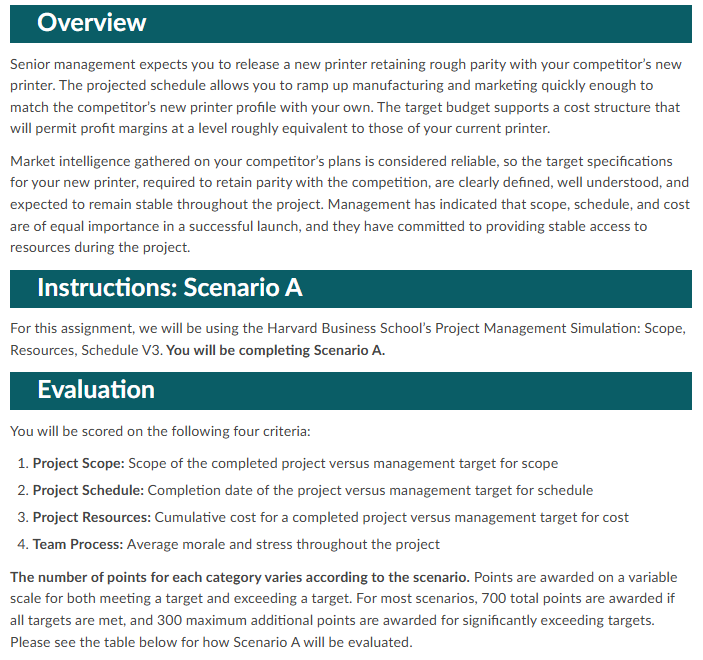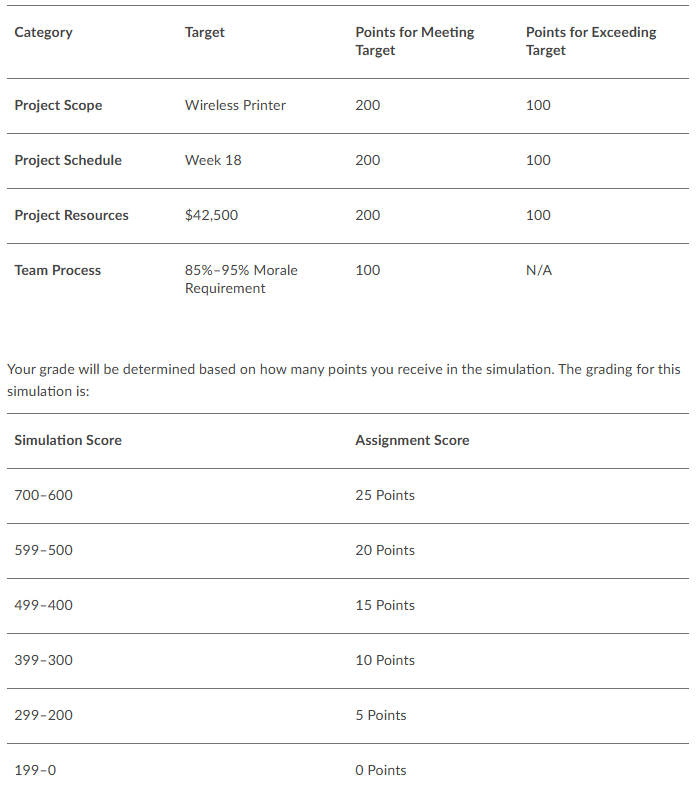Practicing Project Management Tasks Using Simulations
Overview
Students take on the role of a senior project manager and lead a team through an interactive simulation to successfully plan and deliver a project.
Why Use This?
Simulations provide a safe environment for students to practice real-world decision-making without real-world consequences. They can experiment, take risks, and immediately see how their choices affect project outcomes.
This hands-on approach lets students apply theoretical project management concepts in a realistic context while developing durable workplace skills such as communication, negotiation, leadership, and conflict resolution. Many students report that simulations feel more like a game than an assignment, which keeps them motivated and excited to learn.
⭐What Students Say
I am hoping there are more simulations to come because I look at them as a fun thinking game, so I’m enjoying them overall.
How Does It Work?
Students purchase access to a Harvard Business School simulation in project management. In the simulation, they are placed in a scenario where they must manage the release of a new product—in this case, a printer.
Acting in a senior role, students make decisions about the project’s scope, schedule, resources, and costs while balancing team morale. The simulation provides feedback on these elements of the project as the students work through the scenario, helping them understand the trade-offs and consequences of their choices in real time.

Overview
Senior management expects you to release a new printer retaining rough parity with your competitor’s new printer. The projected schedule allows you to ramp up manufacturing and marketing quickly enough to match the competitor’s new printer profile with your own. The target budget supports a cost structure that will permit profit margins at a level roughly equivalent to those of your current printer.
Market intelligence gathered on your competitor’s plans is considered reliable, so the target specifications for your new printer, required to retain parity with the competition, are clearly defined, well understood, and expected to remain stable throughout the project. Management has indicated that scope, schedule, and cost are of equal importance in a successful launch, and they have committed to providing stable access to resources during the project.
Instructions: Scenario A
For this assignment, we will be using the Harvard Business School’s Project Management Simulation: Scope, Resources, Schedule V3. You will be completing Scenario A.
Evaluation
You will be scored on the following four criteria:
Project Scope: Scope of the completed project versus management target for scope
Project Schedule: Completion date of the project versus management target for schedule
Project Resources: Cumulative cost for a completed project versus management target for cost
Team Process: Average morale and stress throughout the project
The number of points for each category varies according to the scenario. Points are awarded on a variable scale for both meeting a target and exceeding a target. For most scenarios, 700 total points are awarded if all targets are met, and 300 maximum additional points are awarded for significantly exceeding targets. Please see the table below for how Scenario A will be evaluated.

Category | Target | Points for Meeting Target | Points for Exceeding Target
Project Scope | Wireless Printer | 200 | 100
Project Schedule | Week 18 | 200 | 100
Project Resources | $42,500 | 200 | 100
Team Process | 85%–95% Morale Requirement | 100 | N/A
Your grade will be determined based on how many points you receive in the simulation. The grading for this simulation is:
Simulation Score | Assignment Score
700–600 → 25 Points
599–500 → 20 Points
499–400 → 15 Points
399–300 → 10 Points
299–200 → 5 Points
199–0 → 0 Points
Keep In Mind
- Use real-world cases and challenges so students must analyze problems, navigate conflicts, and propose solutions similar to those they may face professionally.
- Ask students to work in teams so they can practice decision-making, risk assessment, and problem-solving while collaborating with their classmates.
- Use open-ended, guiding questions to push students to explain their reasoning for a decision and explore alternative solutions.
- Create a safe environment for mistakes by framing them as “lessons learned” and giving constructive feedback focused on the decision-making process, not just the outcome.